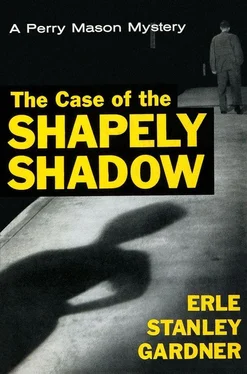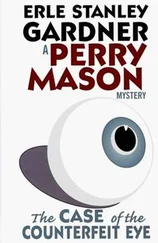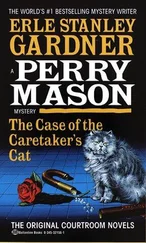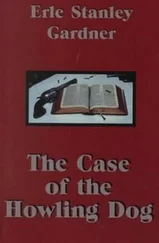“So all that you can say as a result of post-mortem lividity is that the body of the man you saw had been lying there for more than five hours, that death had occurred more than five hours earlier. Is that right?”
“Well... there were other factors.”
“Never mind the other factors right now,” Mason said. “I’m talking about post-mortem lividity alone. Isn’t it a fact that all you could learn from the post-mortem lividity of that body in the condition that you saw it, and I am talking now, Doctor, about post-mortem lividity alone, is that in your opinion the man had been dead more than five hours?”
The doctor hesitated perceptibly.
“Yes or no?” Mason asked.
“Yes,” Dr. Jasper said at length.
“Now we’ll come to the other phenomenon which you mentioned, rigor mortis. Can you describe rigor mortis so the jury will understand it?”
“It is a stiffening of the body due to chemical changes within the muscle tissue. Immediately after death the body is very limp. Then a certain stiffness begins to develop in the face and jaws and goes down the neck, chest, arms, abdomen and finally the entire body is involved.
“Then after a period which may be somewhat variable, the rigor begins to leave the body in the same order that it appeared. First, the neck and face become limp, then the disappearance of the rigor continues on down the body until finally the entire body becomes limp once more.”
“And in this body that you saw, rigor had become fully developed?”
“That’s right.”
“Therefore you were led to believe that death had taken place, when?”
“As I said, between midnight and five o’clock in the morning.”
“Is the development of rigor a constant factor?” Mason asked.
“Not necessarily.”
“Normally, within what time limits does it develop?”
“Within eight to twelve hours.”
“Eight hours?” Mason asked.
“Conceivably, yes.”
“Then, in a body in which rigor mortis was fully developed at seven-thirty in the evening, it is possible, is it not, that death could have occurred as late as ten-thirty in the morning?”
“Well, it could have, yes.”
“And that is well within the so-called normal limits?”
“Yes.”
“Now then,” Mason said, “isn’t it a fact that there are other factors which hasten the onset of rigor mortis? Isn’t it a fact that where a person has been murdered at a time when he was engaged in physical activity, or in the course of a struggle, rigor may develop much sooner?”
“I believe that is true.”
“And temperature is also a factor.”
“Yes.”
“There are cases, are there not, where rigor mortis has fully developed almost instantly, Doctor?”
“Well, within very short times.”
“Almost instantly?”
“It depends on what you mean by instantly.”
“Within a few minutes, say ten or fifteen minutes.”
“Yes, I believe so.”
“Now, Doctor, when you were asked about the time of death and how you fixed it, you stated that there were certain phenomena which were in the nature of clues to the trained forensic pathologist and you mentioned two — rigor mortis and post-mortem lividity. Now, since we have seen that post-mortem lividity develops within one or two hours after death and that in the body that you examined it meant nothing more than that death had taken place in your opinion five hours before, and since it now appears that rigor mortis is a variable factor, I am going to ask you what other factors entered into your mind in fixing the time of death?”
“There were no other medical factors.”
“No other medical factors?” Mason asked, his tone reflecting incredulous surprise.
“None,” Dr. Jasper snapped.
“Isn’t it generally conceded that estimating the time of death by rigor mortis is apt to lead to incorrect deductions?”
“I don’t know. I would say that rigor mortis was a certain barometer.”
“Rather an uncertain barometer, isn’t it, Doctor, since it can appear a few minutes after death, or may be delayed as much as twelve hours?”
“Well, those are extreme cases.”
“How do you know that this wasn’t an extreme case?” Mason asked.
The doctor fidgeted uneasily.
“Speak up,” Mason said. “How do you know this wasn’t an extreme case?”
“I don’t,” the doctor admitted.
“How about body temperature?” Mason asked. “Isn’t that considered the most reliable way of determining the time of death?”
“Body temperature is a factor, yes.”
“Perhaps one of the most reliable factors?”
“It is a factor.”
“It is quite reliable?”
“Fairly so. But it varies.”
“It isn’t subject to as many variations as rigor mortis is, is it?”
“Well, it depends.”
“Doctor, I am going to ask you if you didn’t write an article in the Journal of Forensic Medicine, Pathology and Crime Detection entitled, ‘Determining the Time of Death’ and if in that article, which was published in December of last year, you didn’t state that of all the methods of determining the time of death, rigor mortis was perhaps the most generally unreliable and that the drop in body temperature was perhaps the most reliable?”
The doctor fidgeted on the witness stand. “I don’t remember expressing it in exactly that way,” he said.
Mason opened his brief case, whipped out a copy of the publication and said, “Perhaps you would like to refresh your memory from reading this, Doctor?”
“Well, no. I now remember what I said,” the witness admitted. “I believe I did say something like that.”
“Then why are you trying to build up rigor mortis as a more or less infallible time of death in this case and minimizing the body temperature factor?”
“I’m not doing any such thing,” the doctor protested indignantly.
“You have fixed the time of death from two clues which you have stated in your testimony were of value to the.forensic pathologist — postmortem lividity and rigor mortis. Now, what about temperature, Doctor? Did you take the temperature?”
“I did not take the body temperature.”
“Oh, you did not?”
“No, not at that time. The body when I saw it was fully clothed and the only means of taking the body temperature are... well, the body should be unclothed at that time.”
“And when the body was removed it was clothed?”
“Yes.”
“And after the clothes were removed from the body, was the temperature taken?”
“Apparently it was not,” the doctor admitted. “There was some confusion. Someone thought I had taken the temperature. I thought someone else had. In any event, the temperature was not taken.”
“So then,” Mason said, “you’re trying to fix the time of death simply by two things: post-mortem lividity and rigor mortis. Now, in your article, Doctor, you stated that rigor mortis was one of the least dependable indications as to the time of death because varying conditions could affect the onset and development of rigor, and you said nothing whatever about post-mortem lividity. You didn’t even mention it as a factor.”
“Well... no.”
“Isn’t it a fact, Doctor, that someone blundered, and the body temperature was not taken, and because you wanted to make your testimony sound impressive you mentioned post-mortem lividity as being a factor in enabling you to reach your conclusion as to the time of death? Isn’t it a fact that post-mortem lividity, under these circumstances, is meaningless?”
“I object,” Ruskin said. “That question is unfair. It is—”
Читать дальше












